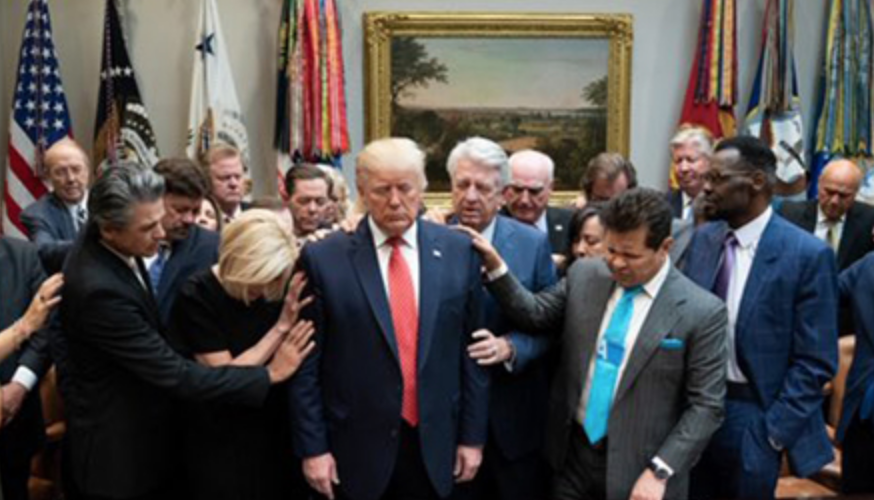How acceptable has the term “evangelical” become?
94% of Assemblies of God self-identify as evangelical.
It’s 83% of Southern Baptists.But the bottom of the list is interesting, too:
29% of Orthodox Christians.
20% of Mormons.
15% of Catholics.
13% of Orthodox Jews. pic.twitter.com/F0wBOIKcQY— Ryan Burge 📊 (@ryanburge) December 15, 2020
Hey journalists: How many stories have your read (or for some of us, written) in the past quarter century or more about how “evangelicals” and/or the Religious Right is fading and the religious left on the rise?
Those topics often go together, for some reason, and this topic is one of those evergreen themes in coverage linked to religion and politics.
The reality is much more complex. I have found that the problem, from the point of view of editors, is that there is more to this subject than politics. Do dig into the complex realities here, one needs to discuss all kinds of icky things — like doctrine, race, birth rates, evangelism and post-denominationalism. Who wants to do that?
Meanwhile, there is the whole complicated church-history question about the definition of the term “evangelism.” Believe it or not, this is not a political term. It you want to read more on that topic, including Billy Graham’s attempt to offer a destination, click here (“Define ‘evangelical’ — please”), or here (“Define ‘evangelical’ — again”), or here (“Define ‘evangelical’ — 2013 edition”) or here (“Define ‘evangelical,’ please — 2019 edition”).
I bring this up because I have been collecting another blast of essential Ryan Burge tweets (there are so many from this guy) related to this topic.
Journalists and religion-news aficionados also need to check out this post at the Religion in Public blog that is his online home base: “The Evangelical Brand is Not as Tarnished As Most People Think.”
There is so much to talk about here. I mean, check out the chart at the top of this post. I mean, don’t you want to know more about the 13% of Orthodox Jews who self-identify as “evangelical” or “born again”? How about the 1% of atheists in that niche?
This post is all about the charts. But still, here is a crucial thesis statement from the Burge “evangelical brand” post:
… In the world of social media, the consensus seems to be that the term “evangelical” is irreparably damaged, in large part due its cooptation by politically conservative Christians who support policies that many perceive to be immoral, while also providing unflagging support for President Donald Trump.
And, it’s become somewhat of a trope now that evangelicals are in decline. But, I honestly don’t think that’s as true as most people believe it to be.
The phrase, “decline of evangelicalism” is something that needs to be caveated a bunch.
Here’s just one.
The share of Americans of all races who self-identify as “born-again or evangelical” is substantively unchanged in the last 11 years. pic.twitter.com/CRNVr439QC
— Ryan Burge 📊 (@ryanburge) December 6, 2020
As you would expect, Burge also had to address the “definition” issue. It doesn’t help if people use “evangelical” as a political curse word and then leave it at that.
There are two ways to measure evangelicalism. One is based on denominational affiliation. For instance, if a respondent says that they are Southern Baptist, they are classified as an evangelical even if they don’t know what that word means. The other is determined by self-identification. The survey asks: “do you consider yourself born-again or evangelical?” And if a respondent says, “yes” then they are an evangelical even though they may not even be a Protestant. I tackle the pros and cons of both approaches here.
Actually, I think the reality is more complex than that social-sciences approach.
There is a third way to look at this, of course, but it requires the study of specific approaches (plural, alas) to history and doctrine. If you want to know more about that puzzle, you need to seek out someone like historian Thomas Kidd of Baylor University (click here for a good interview), author of the essential book “Who is an Evangelical? The History of a Movement in Crisis,” published just last year.
All the hot takes about how Trump has turned large groups of people against evangelicalism just don’t show up in the data, btw.
Share who identify as evangelical/born-again in 2008 vs 2019.
18-35: 28%-27%
36-44: 35%-30%
45-54: 36%-34%
55-64: 37%-37%
65+: 37%-35% pic.twitter.com/01rwUtOnxk— Ryan Burge 📊 (@ryanburge) December 7, 2020
Here is one more shot of Burge, to help you see what he is talking about:
… The share of non-evangelicals who identify as Republicans has stayed extremely stable between 2010 and 2019. However, that’s not the case for those who self identify as evangelical. In 2010, 55% of Protestants who identified as evangelicals were Republicans, that’s up to 62% in 2019. For Catholics, it’s up 1.7%, for those of other faith traditions it jumped over twelve percentage points.
It may be more appropriate to say that evangelicalism today is not smaller, it’s just more religiously diverse and politically homogeneous. I think this speaks to a central theme of American religion and politics over the last two decades. Political partisanship is one of the driving forces altering the American religious landscape – and the evangelicalization of many faith traditions is a phenomenon that will force its way into the national consciousness in the coming years.
Read it all and file away some of these numbers.
They will, you see, remain relevant. Even after Trump — a mainline Protestant who now self-identifies as a nondenominational something-or-another — leaves the White House.
You want to see how much the evangelical fixation on SCOTUS has actually mattered?
There is exactly one religious tradition that was more likely to correctly name the Chief Justice than to know the length of a Senate term.
It was white evangelicals.
Messaging matter. https://t.co/0c46mtCh9z pic.twitter.com/gTL3HmHSRi
— Ryan Burge 📊 (@ryanburge) December 8, 2020
FIRST IMAGE: Official White House photo.










